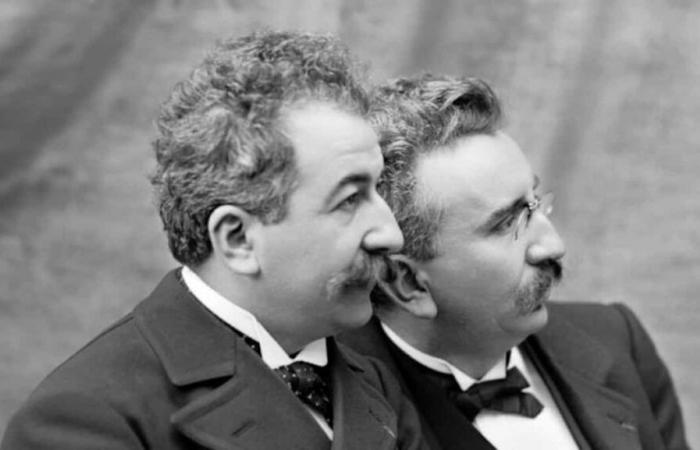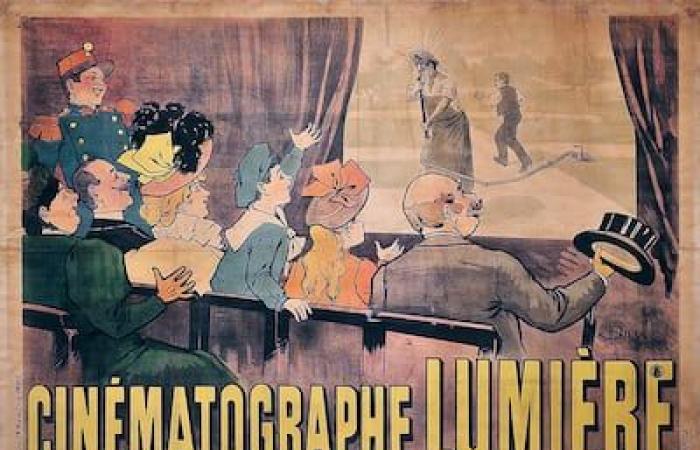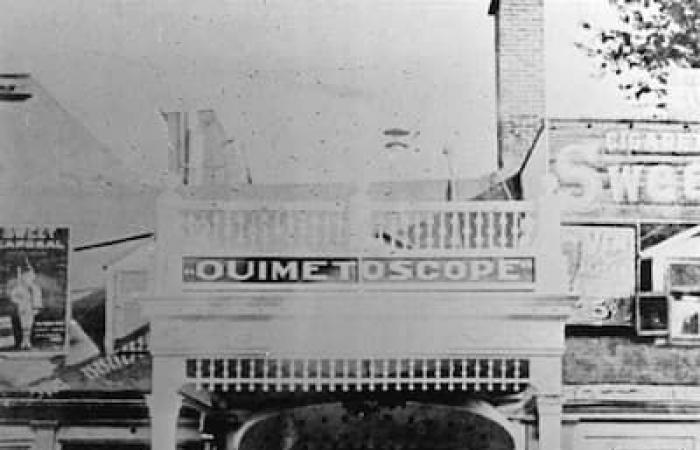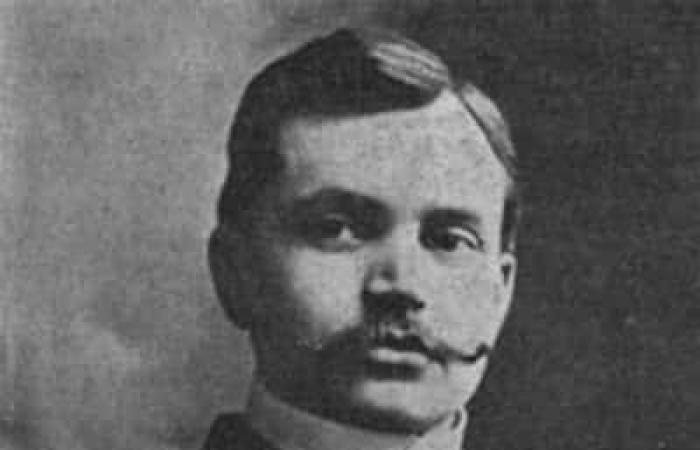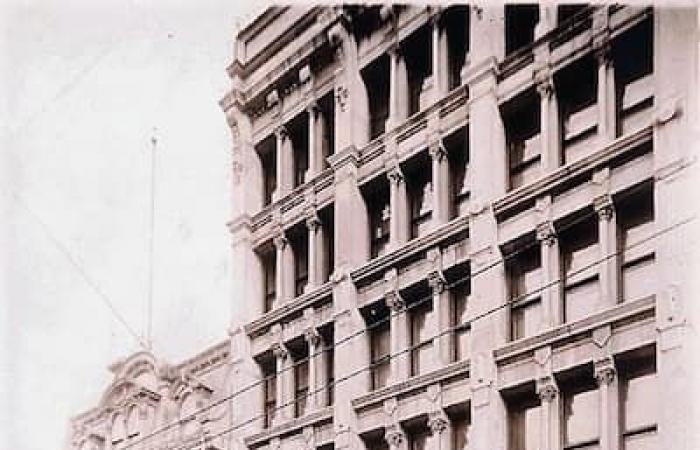Before Léo-Ernest Ouimet could open his first cinema in Montreal, the Ouimetoscope, it was necessary to invent all the equipment necessary for the production and especially for the projection of the first films. In this regard, we cannot ignore the importance of Louis and Auguste Lumière with the invention of the cinematograph.
After their father Antoine saw Thomas Edison and William Dickson’s Kinetoscope, he encouraged his sons to use their knowledge of photography to develop a camera and, more importantly, a device capable of projecting moving images onto a screen so that several people can see them at the same time. The Kinetoscope, although revolutionary in the field of images, unfortunately only allowed individual viewing of short films.
A “Kinetoscope parlor” in San Francisco (1894).
Public domain photo
The Lumière brothers invented the cinematograph in 1895. It is operated with a crank on the side of the camera. The device works with regularly perforated film to allow the captured images to be “printed”, with rest periods during which you can either print or view what has just been recorded.
It was on December 28, 1895, at the Grand Café in Paris, that the two brothers organized the first public screening of a film in history. Lasting 50 seconds, the short film is entitled The exit of workers from the Lumière factory, and we see workers simply leaving the family factory.
Poster for the Lumière cinema, “L’arroseur arrosé”, Pichot printing house, Paris.
Photo MARCELLIN AUZOLLE
The projection caused a sensation and cinematography quickly spread around the world, allowing the production of several silent films at the beginning of the 20e century.
It was in the city of Quebec that the Lumière brothers team decided to arrive, in 1896, to present their films. The screenings take place at the former Palais des illusions, formerly located on rue Saint-Joseph. The first short films presented amaze the public and the number of screenings increases every day.
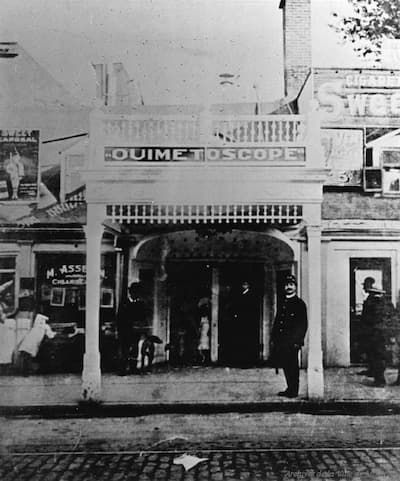
First room of the Ouimetoscope, in 1906.
Photo provided by CINÉMATHÈQUE QUÉBÉCOISE
It was in Montreal that the first permanent cinema opened, on Sainte-Catherine Street East: the Ouimetoscope.
It was opened by Léo-Ernest Ouimet, who worked at the beginning of the century as a projectionist at Sohmer Park in Montreal. He opened his first cinema on 1is January 1906 and, in order to ensure that he had enough new things to present to the Montreal public, he also began to make his own productions.
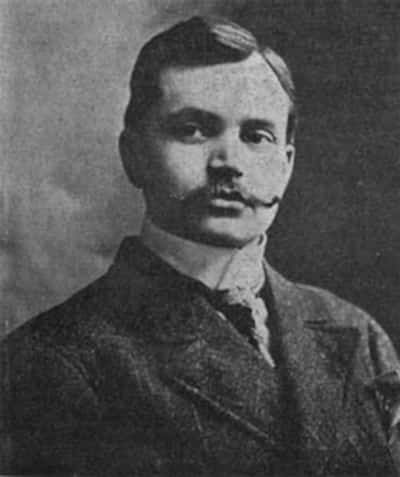
Portrait of Léo-Ernest Ouimet.
Public domain photo
The enthusiasm was such that he was forced, the following year, to demolish the original building in order to erect a building much better suited to the broadcast of what was called at the time “animated views”. »: the Ouimetoscope. The room will also allow vaudeville shows to be presented. The Ouimetoscope can thus accommodate 1200 spectators (with men and women separated at the time), who can choose their seat according to their financial means: balcony, pit or, as at the opera, the box!
In 1909, the Paquet company also opened a cinema in Quebec, the Paquetorium.

Facade of the store of Compagnie Paquet Limitée, the first trading house in Quebec City. Founded in 1850, it specializes in the sale of furniture and haberdashery, bedding, headgear, groceries and hardware.
Photo provided by BANQ

